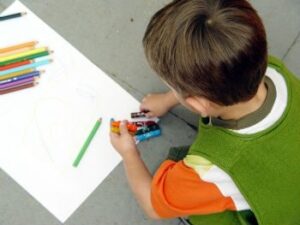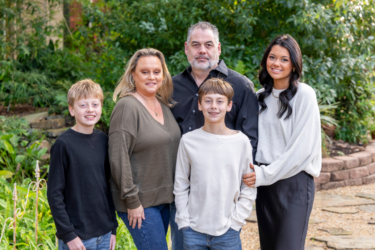The leap to kindergarten marks the first of many transitions to expect even after your child graduates middle school and then high school. Unthinkable now; but come it does, and you want it to. It’s the natural order.
The kindergarten transition amounts to a shift of geologic proportions. While preschool encouraged child development through play, kindergarten changes the emphasis to academics. The program focus becomes more specific: early intervention programs serve family needs; the public school setting serves only the child, in the education setting only. If your little one switches from half-day preschool to full-day kindergarten, the longer hours alone may cause a steep challenge.
Despite my apprehension, our transition to kindergarten nearly a decade ago proved smooth as silk; it can happen. I owe our “soft landing” to our genius preschool teacher. Knowing just how critical these transitions are, she gave me guidance that lasted through Bryce’s childhood.
The most important consideration—for your child and for you—involves eliminating surprises. Other people’s children may delight in surprises, but confronting the unexpected likely leaves your child distressed, distraught and disoriented. For him as a learner and for you as his advocate, the more you both know about what to expect, minute-by-minute, the less anxiety you both will experience and the quicker the adjustments will come.
Developing a no-surprises mindset early helps you realize how quickly minute by minute turns into day to day and year after year. “No surprises” goes hand-in-hand with another favorite philosophy of mine: assume nothing. Assuming anything without facts is the equivalent of guessing. With a transition as significant as the move to kindergarten, even educated guesses don’t suffice. In just one column, I could never provide all tools and guidance needed to ensure that you will avoid every unpleasant surprise. But I can give you a place to start, and a place to come back to each year when you face yet another transition.
For your child
Show ‘n’ tell. Your child likely absorbs information most easily when presented visually. Photos and videos of a new school, new classrooms, new teachers and staff go a long way toward familiarizing your child with his new environment. Visit the new classroom; meet the new teacher one-on-one before the crush of the first day of school. Showing the child how his daily schedule includes multiple settings will smooth many tasks. Class pictures and yearbooks help him connect to schoolmates.
Enlist school staff and peer buddies to be alert for non-academic obstacles that can derail his day. Especially beware the restroom, lunchroom and playground. You don’t want to find out months later that he never washes his hands because he can’t figure out the sink or the towel dispenser, or worse, “holds it” all day because he can’t figure out the commodes or the lights. Then on to the lunchroom, where he goes hungry because he can’t figure out the lunchbox clasp, the zip baggie or the juice box. And then to the playground, where he “walks the fence” because he doesn’t know how to snag a basketball for himself. Use the summer to identify and practice skills that will ensure a smooth transition.
For mom and dad
Do not assume all pertinent records and reports will make their way to a new school or new teacher each year. Do not assume the new teacher will have read them even if received. Confer as early as possible to ensure she has adequate background information about your child and adequate training teaching children with Autism Spectrum Disorder or other developmental delays. If you have to be the one to gather and disseminate this information, do it in the spirit of teamwork, not combat. Most teachers truly do have your child’s best interests at heart, even when severely restricted by school resources, class load or inadequate training.
Do not assume you will receive the same level and type of service in an Individualized Education Program (IEP) that you received in an Individualized Family Service Plan (IFSP). If you haven’t already, familiarize yourself with the major special education laws that pertain to school-age children.
Do not assume you will have unlimited access to the classroom or to school records. Each teacher, school and parent differs. Not all moms can volunteer in the classroom, not all children want their moms there and not all teachers have open-door policies. Explore involvement opportunities with the school community through site councils, advisory boards, the web and listserves.
Do not assume the next teacher or school will duplicate your previous experience. Each new teacher and school deserves to start with a clean slate and build a relationship with you based on fact, not second-guesses or preconceived notions.
Do not assume your child can or will tell you what happens at school. A home-school communication book that goes back and forth each day will circumvent an untold number of nasty surprises on both ends.
Off and running
Laying the groundwork for “no surprises” has one ultimate goal: your child can independently handle as much of his “day job”—being a student—as possible. The goal for his future education is to create an adult who can function as independently as possible. From the beginning, instill independent-living habits and skills. Let him do as much for himself as possible, with patient instruction from you rather than intervention.
Teachers tell me one of the most common mistakes well-meaning parents make includes doing things for their child rather than teaching the child to do it himself.
Whether it’s packing the backpack in the morning, putting together his lunch, completing the last two math problems or zipping his own jacket—I understand, sometimes in the morning or evening time crunch, it’s much more expedient to do it for him. But learning to organize his work and his time and knowing how to manage his own clothes and money are the skills that will bring him autonomy, and he will only learn them through patient repetition.





